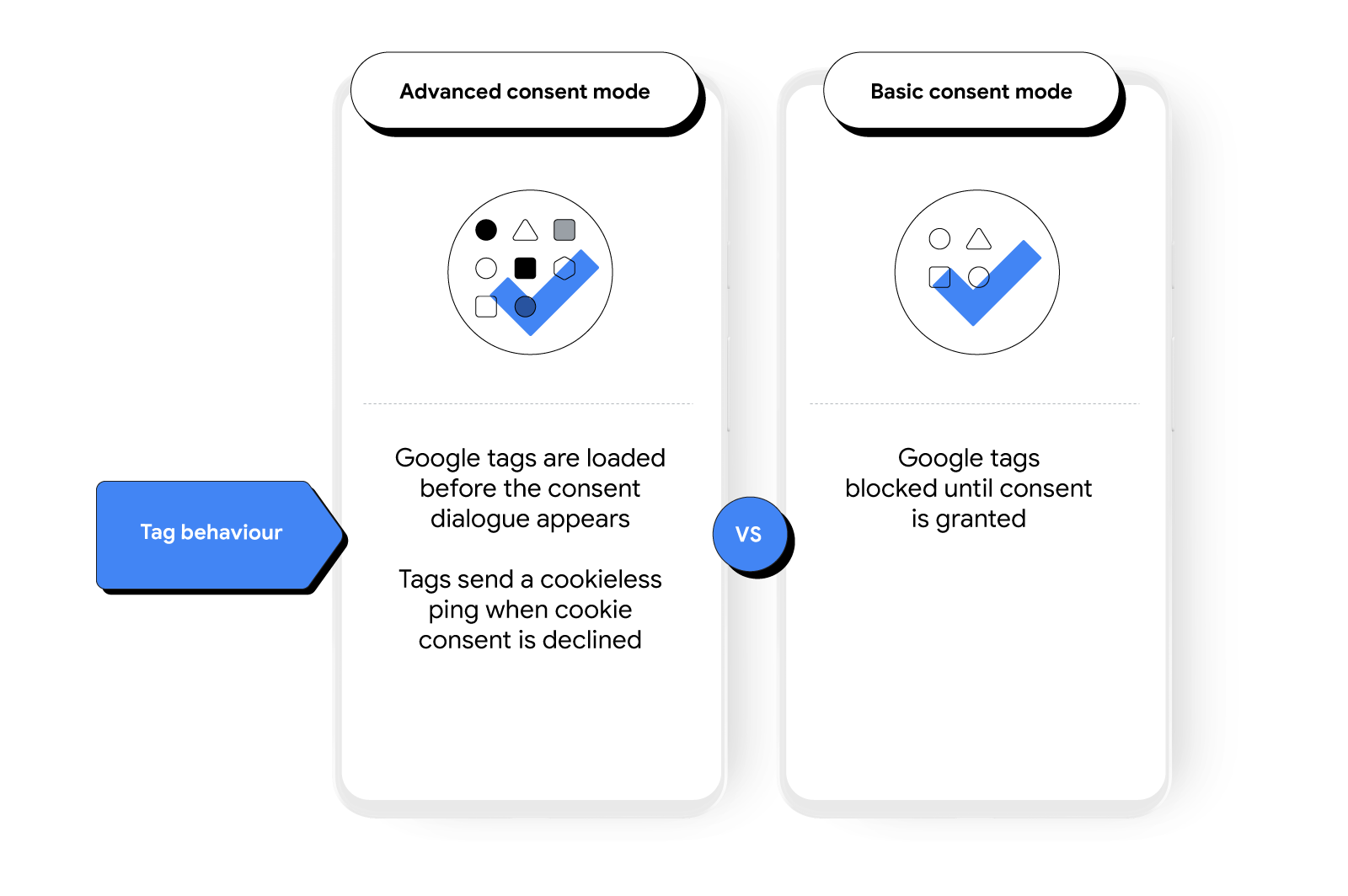D'Ieteren automotive is the official distributor of Volkswagen brands in Belgium. Simon De Pauw and Dimitri Dries are responsible for the company’s digital media and analytics, which includes implementing advanced consent mode across its whole portfolio.
What would you do if you could see your campaign performance decreasing, but knew the report wasn’t accurate?
This was the very real challenge we saw for Volkswagen in Belgium.
Every month we were seeing our marketing performance decrease. At the same time, business results — such as dealership visits and new car sales — remained flat or positive.
For five years, our data & analytics and media & marketing teams have been working cross-functionally. So, when we spotted this discrepancy we sat down together to discuss what could be happening.
Were the campaigns not optimised? Were the creatives not good enough?
We discovered that an increasing number of users were opting out of marketing and analytical cookies. And this opt-out was causing us to lose valuable data, leaving us with a gap between insights and reality.
Hitting the brakes on data gaps, one brand at a time
As businesses, we need to find a way to collect first-party data, whilst maintaining consumer trust and transparency. After all, the more insights we have about how potential car buyers interact with our website, the more effective and efficient our campaigns can be.
We have a number of brands including Volkswagen, Cupra, and Audi, which means multiple customer-facing websites. For some brands the consent acceptance rates dropped 20% in just two years. This was because our users had become more privacy aware and were not actively accepting the cookies. This had a severe impact on the conversion we were able to report and our performance comparison year-on-year.
We had to act fast to ensure we had an accurate and aligned view across our marketing and business performance. But we needed to make sure that whatever we implemented, we could test, scale, and trust.
That’s why we started with one brand, to test out advanced implementation of Google’s consent mode, which allows us to ‘fill in the blanks’.
When a customer declines consent for a cookie, the feature uses AI-based modelling to send an anonymised ‘ping’ even when cookies are blocked. This means that when consent is declined, an action is still logged in our analytics. So, we know a page has been viewed, but no other private information.
This is important because this was the cause of the data gap we were seeing.
Navigating via tag manager
Our client websites and servers already used Google Tag Manager, which creates and tracks pieces of code that log activity on apps or websites. Having this already set up made our implementation slightly more straightforward. It was largely a matter of switching what triggered our tags, via advanced consent mode, across the platforms.
Here’s an example of how tags work both within basic and advanced consent mode:

However, having multiple brands — each with a different website, technology stack, team, and a tight time frame — created an additional challenge. We had to create bespoke solutions for each and ensure the teams felt confident using the new systems.
A green light for consent mode
Since its implementation, advanced consent mode has brought our data closer to reality.
The results vary from brand to brand, but as each had different starting points, that’s to be expected. We mentioned earlier that the cookie acceptance was very different depending on brand, and we can see the new tool filling the gaps where consent was the lowest.
That is because the cookieless actions are now recorded in our analytics. We are able to see the full picture, anonymised for users who decline consent, because the advanced consent mode records these events too.
The uplift in data collected by this new consent mode was between 15 and 40%. That meant the hole left from the 20% drop in cookie acceptance, was nearly filled for most brands.
Our biggest learning has to be that filling our data gaps has helped all our future campaigns. By closing the blind spot we had, we created a view that is closer to reality, allowing us to make more informed decisions. We also noticed that our Google Ads and DV360 campaign algorithm's were better optimised, based on this additional data.
We can see where our ad spend makes a difference, understand the true return on investment on media campaigns, and get more credit as a team for generating business.
In this changing world of privacy regulations, customer expectations, and business needs, you have to be flexible, keep iterating on your processes, and experimenting with new solutions.








